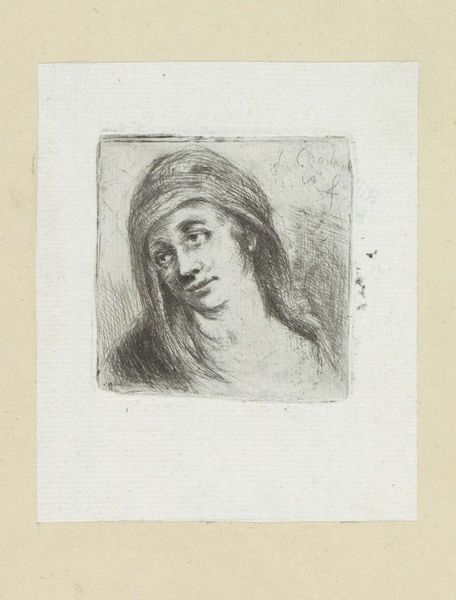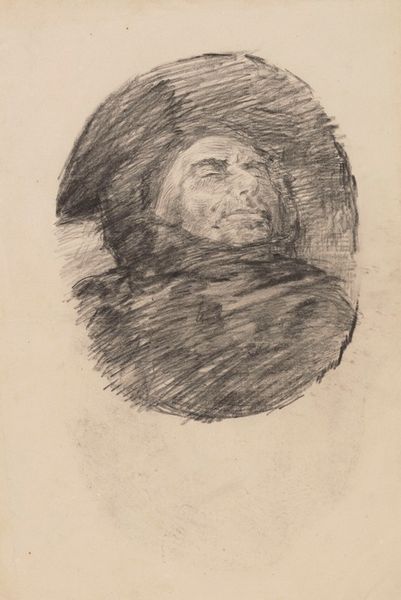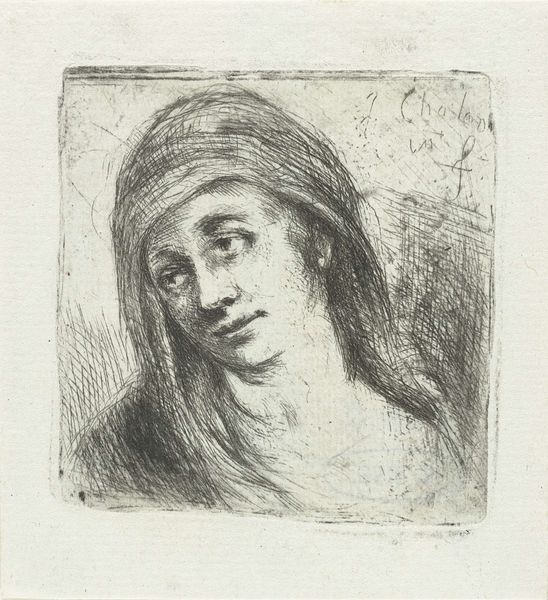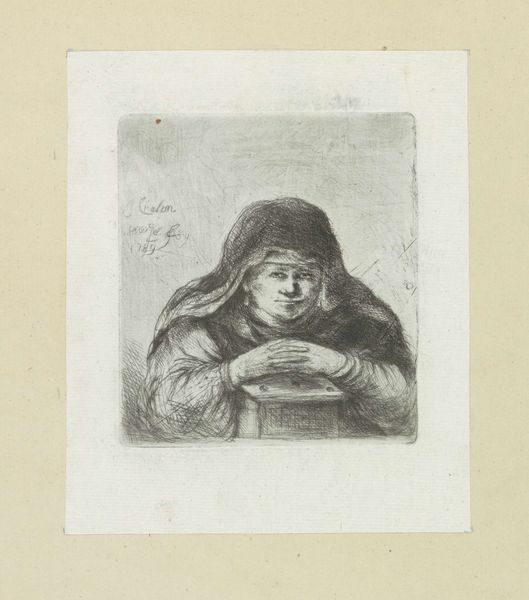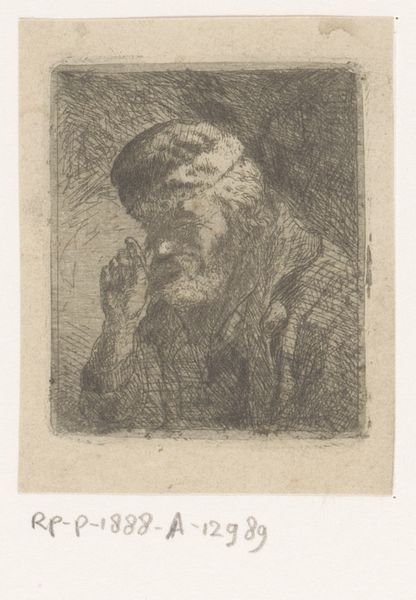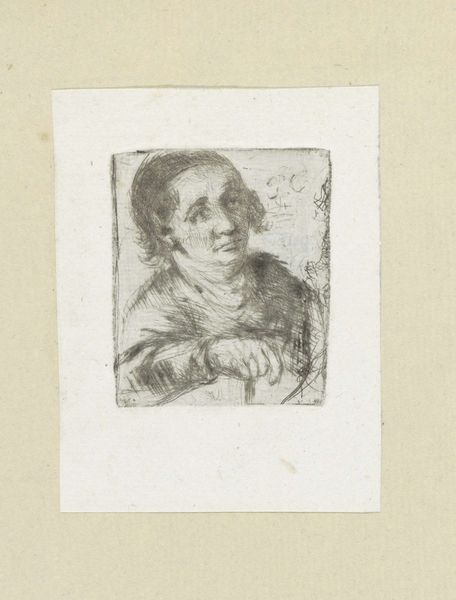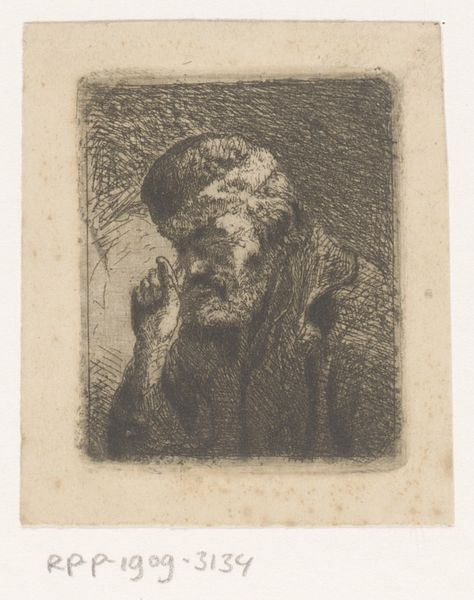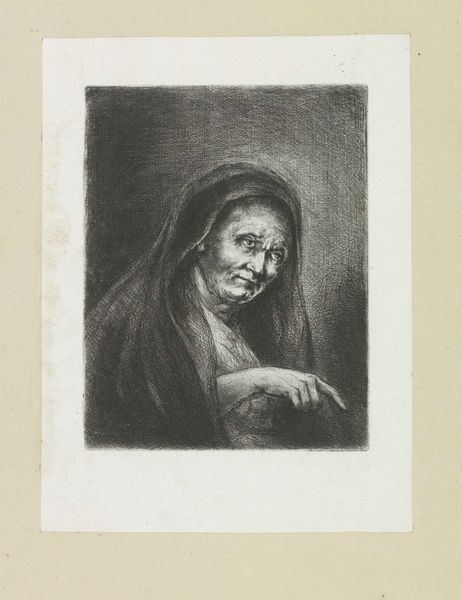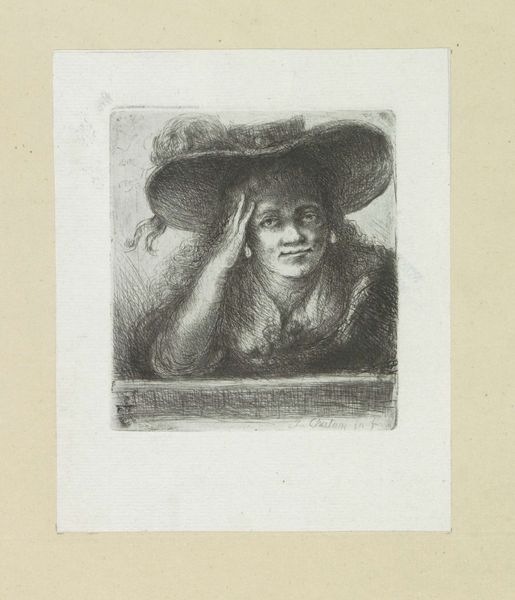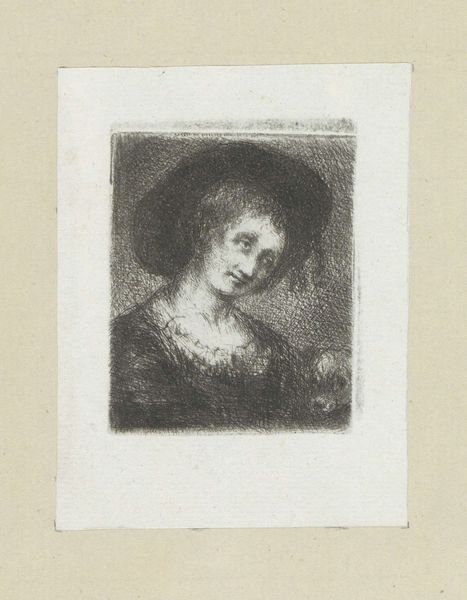
print, engraving
#
portrait
#
pencil drawn
# print
#
pencil sketch
#
charcoal drawing
#
figuration
#
pencil drawing
#
line
#
sketchbook drawing
#
history-painting
#
engraving
Dimensions: height 102 mm, width 96 mm
Copyright: Rijks Museum: Open Domain
Curator: Looking at "Oude vrouw met zwarte sluier" – Old Woman with Black Veil – a print made around 1802 by Jan Chalon. The etching presents us with a portrait of, well, an older woman in a dark veil. Editor: Immediately, there’s a feeling of stark simplicity, almost austerity, evoked by the lines. You can see every line etched carefully on her face. The close hatching suggests somberness, the lack of color intensifying it further. I wonder what type of printing press Chalon employed? The paper looks sturdy too. Curator: The veil itself is significant, concealing as much as it reveals. Black, universally associated with mourning, could point to widowhood or religious affiliation. The details of her clothing, indicated so scarcely by the engraving style, really contribute to the weight of her presence. Editor: The use of engraving here is fascinating. Each etched line demanded deliberate, physically exacting work. And given the conventions of the period, this would have allowed the print to be reproduced efficiently on a moderate scale. One can only speculate about whether each print bears unique accidental artifacts, signs of human labor... Curator: I wonder if viewers at the time associated the image of the veiled woman with broader societal trends—such as the social status of elderly women in that historical era? The black veil held, and continues to hold, specific cultural significance too, conveying a message beyond the personal. Editor: Indeed. I would bet this work wasn't a commissioned piece. Printmaking provided a vehicle for disseminating images of particular subjects to a potentially wide market of consumers. An engraving like this could serve didactic or merely commercial goals, making the original art accessible to individuals from a certain strata. Curator: Exactly. Looking at her eyes, so expressively drawn. A testament to Chalons skill and perhaps even to his understanding of portraiture during this era, suggesting history-painting itself. There’s something universally recognizable in that gaze despite the specific historical context. Editor: It's an intriguing and accessible work. I will definitely investigate this further into my own research around consumption of printed portraits.
Comments
No comments
Be the first to comment and join the conversation on the ultimate creative platform.
